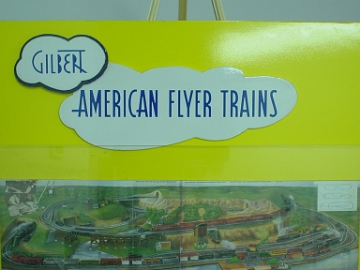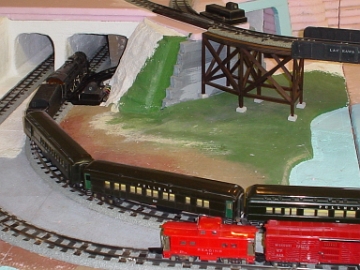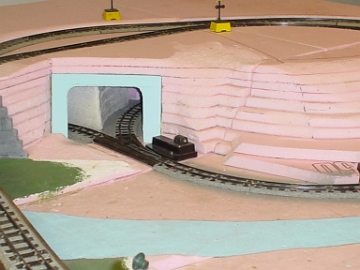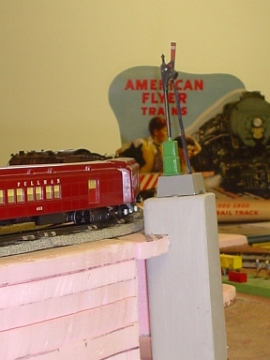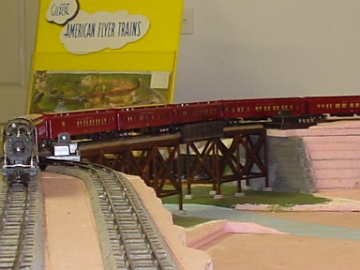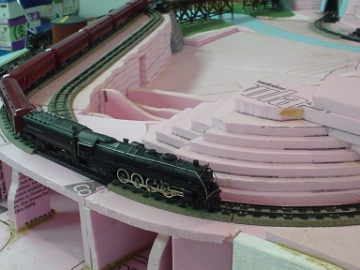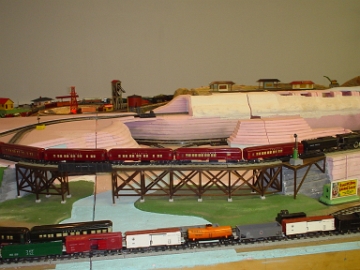
The layout measures 8' x 16'. It is made up of 4 - 4' x '8 tables. Three trains run concurrently on separate loops. All scenery contours are made with foam. The foam is then roughed with a Shur-form tool. This allows application of plaster cloth which accepts paint better and produces a good base for the balance of the scenery.
Generated by jAlbum 20.1, Matrix 56
